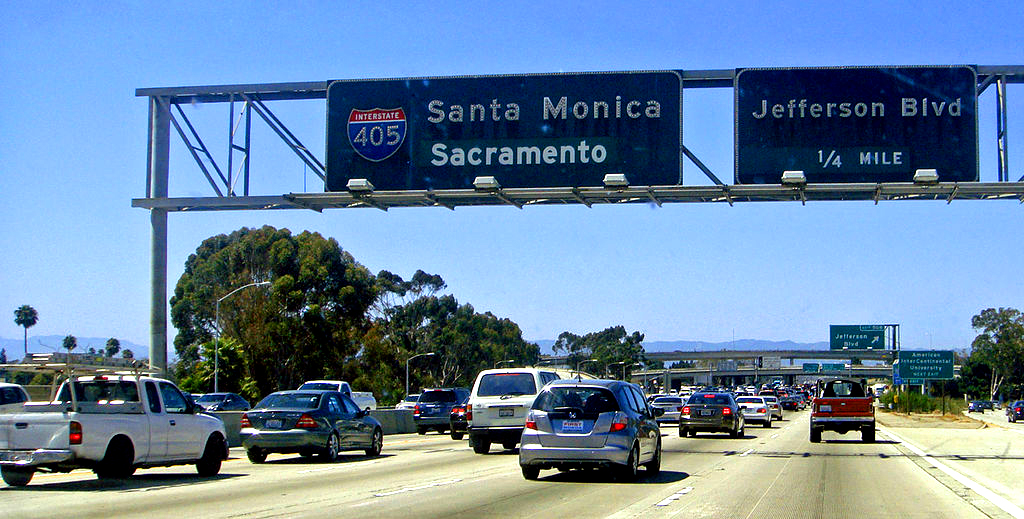As the economy improves and gas prices remain low, Americans are consistently driving more.
Data from the first quarter of 2015 indicates the U.S. is on track to reach a record high number of miles driven this year.
U.S. drivers covered 261.7 billion miles in March, according to the U.S. Department of Transportation.
DON"T MISS: Miles Driven Are Rising, But Gas Consumption Continues To Fall
This represents an all-time record for that month, and also contributed to a record-high first quarter for miles driven, reports The Detroit News.
Americans drove 720.1 billion miles in the first quarter, which as well as being a new record was fully 35 billion more than the same period last year.
It beats the previous record of 705.7 billion set in 2006, and doubles the 345.5 billion miles driven in 1982.

Traffic at the I-10 & I-405 interchange in Los Angeles, California (by Mario Roberto Duran Ortiz)
The total for March alone represents a month-to-month increase of 3.9 percent. It was the 13th consecutive month of mileage increases.
In 2014, U.S. drivers covered 3.02 trillion miles, up 1.7 percent over 2013 and the highest figure since 2007.
The effects of the "Great Recession" and pricier gasoline due to high oil prices curtailed driving after it reached that 2007 high.
ALSO SEE: New Vehicle Fuel-Economy Fell In April, Likely Due To SUV Sales
Annual vehicle-miles traveled declined consistently for several years but now--thanks to economic growth and relatively inexpensive gasoline--they're on the rise again.
At the pace set during the first quarter, Americans are on track to set a new record for annual miles driven in 2015.
And even the 2014 figure is a significant increase from averages in the 1980s, when Americans were driving about 2 trillion miles per year.

2015 Chevrolet Volt
Fuel prices and other economic factors remain the primary determinants of increases in miles traveled, as cars are still the default form of transportation for most Americans.
Despite discussion of alternatives like carpooling and bicycling, the majority of Americans still commute alone in their own cars, according to a recent University of Michigan Transportation Research Institute study.
MORE: Millennials Own Fewer Cars, Seek Other Ways To Get Around: Report (Dec 2014)
A nationwide average of 95.5 percent of workers have access to a car for commuting, the study found.
But even if Americans don't embrace alternative forms of transportation, they're still likely to save money on fuel over the next few years.
That's because the new cars they buy are getting progressively more efficient as carmakers work to reach steadily rising Corporate Average Fuel Economy (CAFE) goals.
Those averages are set to reach 54.5 mpg set for 2025--although that's equivalent to EPA ratings of about 40 mpg on the window sticker.
_______________________________________________












